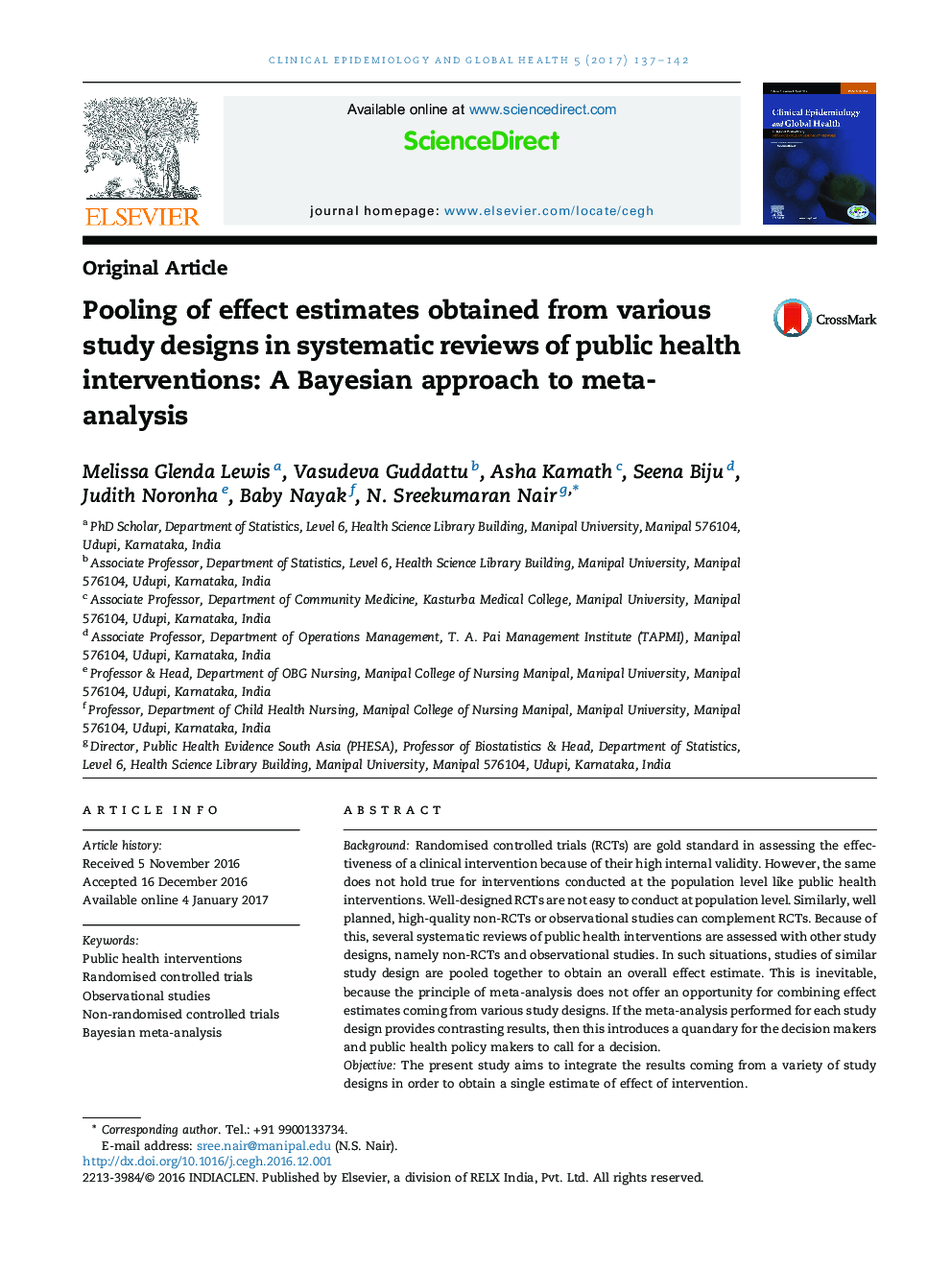| کد مقاله | کد نشریه | سال انتشار | مقاله انگلیسی | نسخه تمام متن |
|---|---|---|---|---|
| 5671399 | 1592968 | 2017 | 6 صفحه PDF | دانلود رایگان |
BackgroundRandomised controlled trials (RCTs) are gold standard in assessing the effectiveness of a clinical intervention because of their high internal validity. However, the same does not hold true for interventions conducted at the population level like public health interventions. Well-designed RCTs are not easy to conduct at population level. Similarly, well planned, high-quality non-RCTs or observational studies can complement RCTs. Because of this, several systematic reviews of public health interventions are assessed with other study designs, namely non-RCTs and observational studies. In such situations, studies of similar study design are pooled together to obtain an overall effect estimate. This is inevitable, because the principle of meta-analysis does not offer an opportunity for combining effect estimates coming from various study designs. If the meta-analysis performed for each study design provides contrasting results, then this introduces a quandary for the decision makers and public health policy makers to call for a decision.ObjectiveThe present study aims to integrate the results coming from a variety of study designs in order to obtain a single estimate of effect of intervention.MethodologyBayesian approach to meta-analysis was used by formulating prior distribution from observational studies or non-RCTs and likelihood function from RCTs. Five systematic reviews of public health intervention were used to demonstrate the methodology.Results/conclusionsBy formulating prior distribution from observational studies, the posterior estimates were found to be different than that from the results of RCTs or other study designs. The posterior pooled-estimate was found to be precise and the width of the credible interval narrowed. Inclusion of the relevant observational studies (or non-RCTs) in the systematic review is a potential advantage for evaluating the effectiveness of public health intervention.
Journal: Clinical Epidemiology and Global Health - Volume 5, Issue 3, September 2017, Pages 137-142
